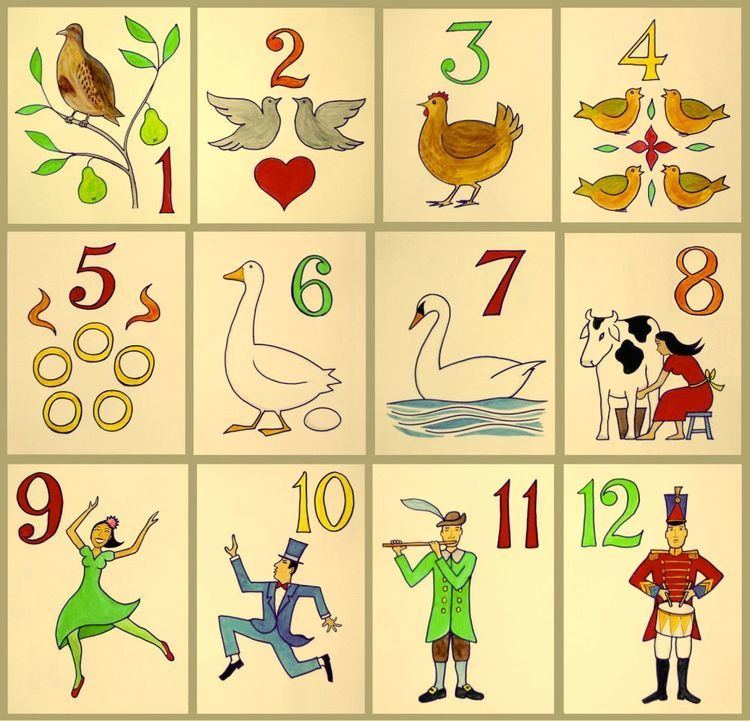 | ||
A cumulative song is a song with a simple verse structure modified by progressive addition so that each verse is longer than the verse before.
Contents
- Structure
- Example with two line stanza
- Example with refrains
- Example with chorus
- Jewish examples
- Song examples
- References
Cumulative songs are popular for group singing, in part because they require relatively little memorization of lyrics, and because remembering the previous verse to concatenate it to form the current verse can become a kind of game.
Structure
Typically, the lyrics take the form of a stanza of at least two lines. In each verse, the text of the first line introduces a new item, and the other line uses the words to begin a list which includes items from all the preceding verses. The item is typically a new phrase (simultaneously a group of words and a musical phrase) to a line in a previous stanza.
The two lines are often separated by refrains. Many cumulative songs also have a chorus.
Example with two-line stanza
One of the most well-known examples of a cumulative song is the Christmas song entitled The Twelve Days of Christmas, which uses a two-line stanza, where the second line is cumulative, as follows:
and so on until
The first gift (the partridge) is always sung to a "coda melody" phrase. For the first four verses, the additional gifts are all sung to a repeated standard melodic phrase. In the fifth verse, a different melody, with a change of tempo, is introduced for the five gold rings; and from this point on the first five gifts are always sung to a set of varied melodic phrases (with the partridge retaining its original coda phrase). Thence forward, the wording of each new gift is sung to the original standard melodic phrase before returning to the five gold rings.
Example with refrains
In many songs, an item is introduced in the first line of each stanza and extends the list in another line. An example is The Barley Mow:
The second verse substitutes a larger drink measure in the first line. In the second line the new measure heads the list and is sung to the same musical phrase as pint pot.
One version of the final line and refrain is:
Example with chorus
A chorus (often with its own refrain) may be added to the stanzas as in The Rattlin' Bog:
One version of the final line+refrain is:
Each phrase is sung to the same two-note melody.
Jewish examples
Yiddish folk music contains many prominent examples of cumulative songs, including "?װאָס װעט זײַן אַז משיח װעט קומען" and "מה אספּרה," or "What Will Happen When the Messiah Comes?" and "Who Can Recall" (a Yiddish version of the Passover song "Echad Mi Yodea").
The Passover seder contains two Hebrew cumulative songs: Echad Mi Yodea and Chad Gadya.
